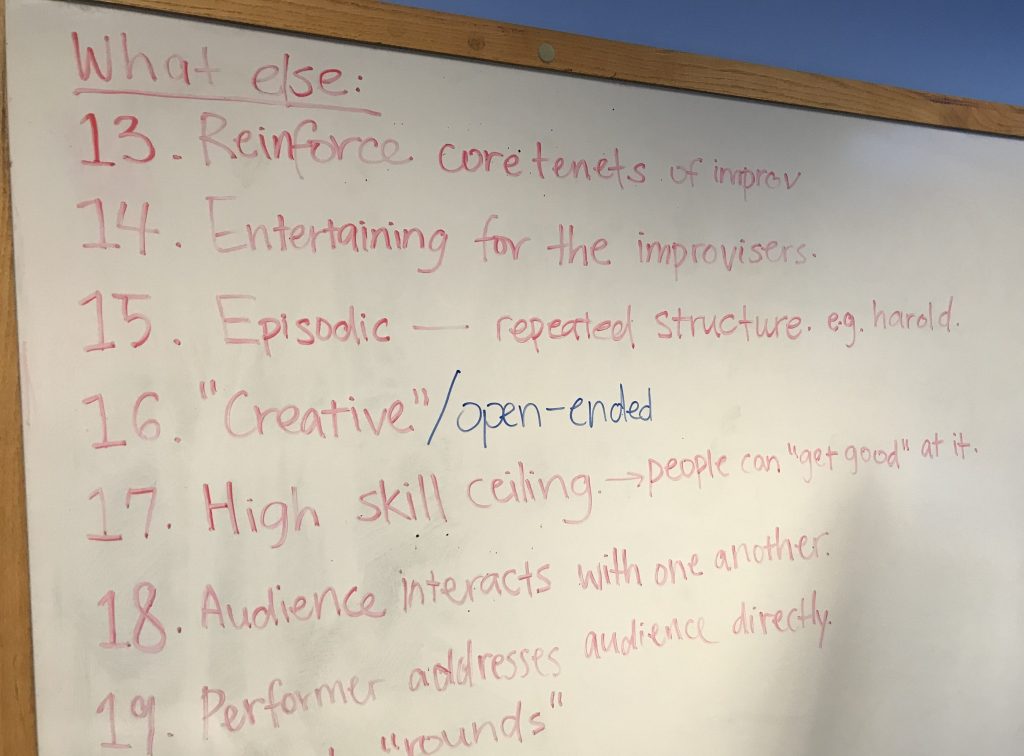What We Did This Week
Employing all of the questions and research areas raised over the last couple of weeks, we had fruitful near-daily brainstorming sessions this week. We turned last week’s foundational iterations into more interesting and complex games, aiming to answer some of our questions while coming up with even more.


We wanted to pin down ideas from the improv side of things first. We all are accustomed to games and the usual Twitch culture, so this approach let us see things from a different angle. Our qualitative method was slightly hard to make good games from, but breaking ideas down like this was important to our need to come up with design frameworks by the end of our project. We took these ideas and later mixed and matched them to come up with a smaller list of thought-out games, and then later pared that down to a list of three to try by the end of the week.
With these improv qualities in mind, we also wanted to stray away from voting as a primary game mechanic. This was what was used in nearly all audience participation games before, from Choice Chamber to Twitch Plays Pokemon and so on, but we feel Twitch can go much farther. We quickly realized the difficulty of this; many, many things can be reduced down to just a form of voting. With some finagling, some of our games to playtest are too.
The first was Freeze Tag, the roughly playtested game from last week. We developed this idea into more or less being a straight translation to Twitch. Important things we took from it are the need for attention management in the audience and how to best train the audience. Improv actors with consistent audiences tend to train their audiences on what to suggest and what not to through creating a positive culture. Spiffy retorts to off-color suggestions or making the crowd side with the performer are important tools, and things we didn’t consider before playtesting this straight translation. This will be a challenge if we don’t get a handle on having stream regulars and moderation, but these two things can be interesting tools added to an improvisers arsenal.
Another was Parasocial Activity, a game for two players. When a new customer arrives at a medium’s seance parlor, they don’t know what to expect. The medium must tell them something, and has to channel the spirits of Twitch chat to do so. Unfortunately, while channeling spirits, the medium can’t communicate that information directly. It’s up to the ghosts of chat to provide phrases for the medium to communicate with their customer. While this game is technically a single-item, single-vote, the necessity for conversation and selective answering lets it stand out. We’re excited to see this one through.
A Weakness
We are not expert improvisers, and this week showed that to us fairly well. While our playtests are decent at seeing a crowd react and their feedback, our own performances are lacking. We knew this going into the project, and are at the point where we need to start making this whole process worthwhile for those who love improv. We aim to fully roll out proper, ethically studied playtests with real actors next week, upgrading to those with proper training and talent. This will be a good step forward for our own theories and thoughts about improv on Twitch, to see if anything we’ve talked about can be used outside our own heads and friends.
